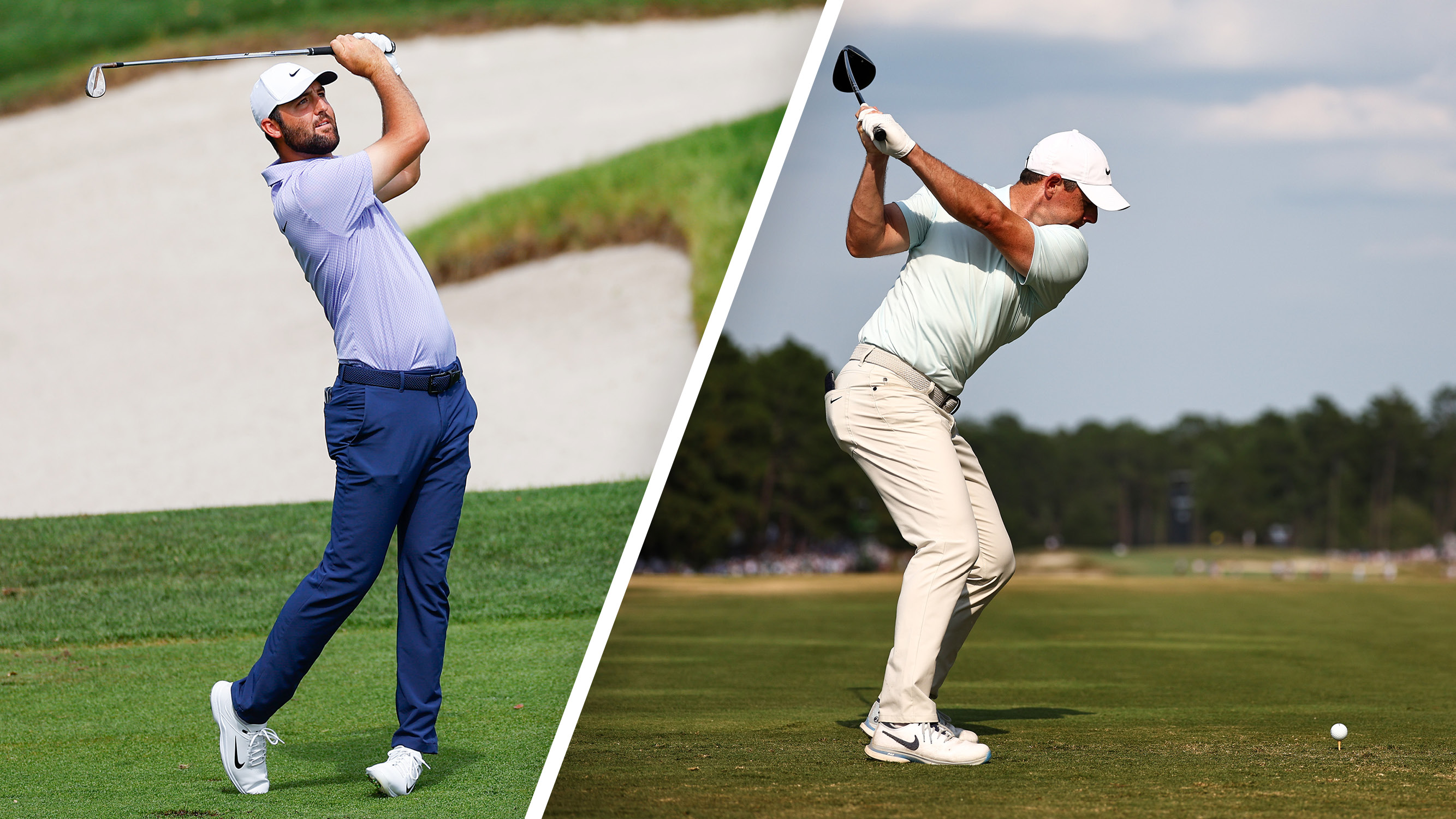
What would the complete golfer look like? If you could combine Rory McIlroy’s driving, Justin Thomas’ wedge play, Matt Fitzpatrick’s scrambling skills and Cameron Smith’s putting, you’d have quite the player.
These Major winners don’t have many weaknesses – certainly not huge ones – but, as the stats show, they often excel in a particular area of the game. We asked Golf Monthly Top 50 Coach Norman Marshall to analyse six of the world’s top players and decipher what is it about their technique that helps to make them so successful.
More importantly, what can you learn from them and then take to the practice range to improve your own game? With these tee-to-green tips, there’s no reason why you can’t transform your own stats, whether that’s greater length off the tee, a better up-and-down percentage, or fewer putts per round. Here’s what you can learn from the best…
1. Rory McIlroy's Power Drive
McIlroy primed for explosive movement is a great sight. Note how his legs are flexed. Imagine someone a step above you about to drop a golf bag into your arms. Your legs would be slightly flexed, but relaxed and ready to absorb the energy. It’s the same in an athletic golf set-up.
His hands and arms hang down without too much tension. Many club golfers tense up and this interferes with coordination and speed. Tension in the grip then shortens the muscles in the forearms; it’s a power leak as it shortens the radius of the swing. McIlroy coils powerfully around the tilt of his spine.
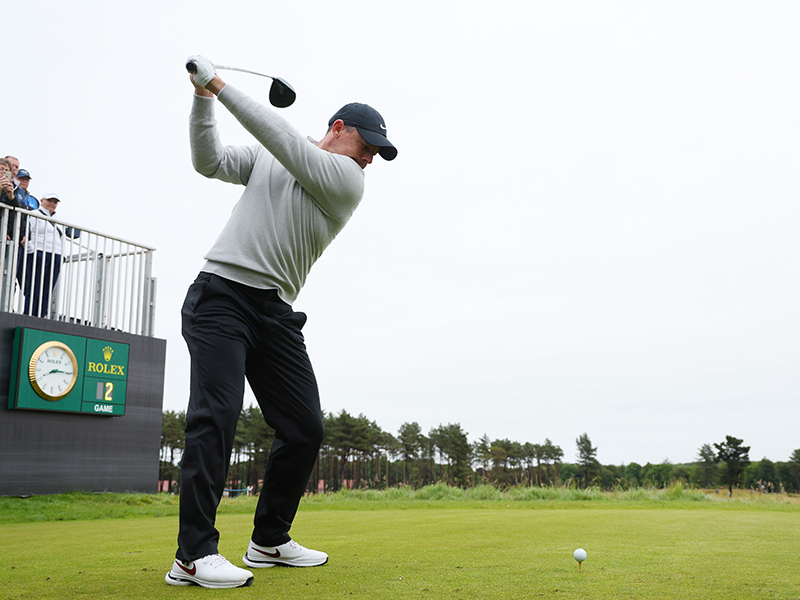
Try holding a club out in front of you at waist height. Rotate it so the face points skywards, then swing fast. Listen to the noise it makes as it cuts through the air. Without the intense focus and tension the ball often induces, you should be able to sense the weight of the club and be aware of the powerful coiling and uncoiling you can create.
McIlroy hits against a braced lead leg. Picture throwing a heavy object, but imagine that as do so your lead leg buckles sideways toward the target. It physically wouldn’t make sense. A straightened lead leg gives your unwinding thighs, hips and torso a resisting force to turn against. This multiplies acceleration and provides the ‘snap’ in the unwinding sequence of the downswing, with arms, wrists and hands the last parts of a chain reaction.
2. Jon Rahm's High Fade
Rahm is consistently long and straight, but, like a lot of players, he favours a left-to-right shape. It’s not unusual to see him hit a high fade. Many of the longer hitters prefer this shape because of the control it offers; they don’t need the extra distance of a draw at the potential expense of accuracy. As Lee Trevino once said, “You can talk to a fade, but a hook won’t listen.”
At address, Rahm displays perfect balance. He has a very strong frame, big glutes and powerful legs. Going to the gym is one way of building strength and adding distance through more ball speed, but there are ways to improve your driving without crunching weights. Perfecting a fade can be achieved with some pretty basic movements.
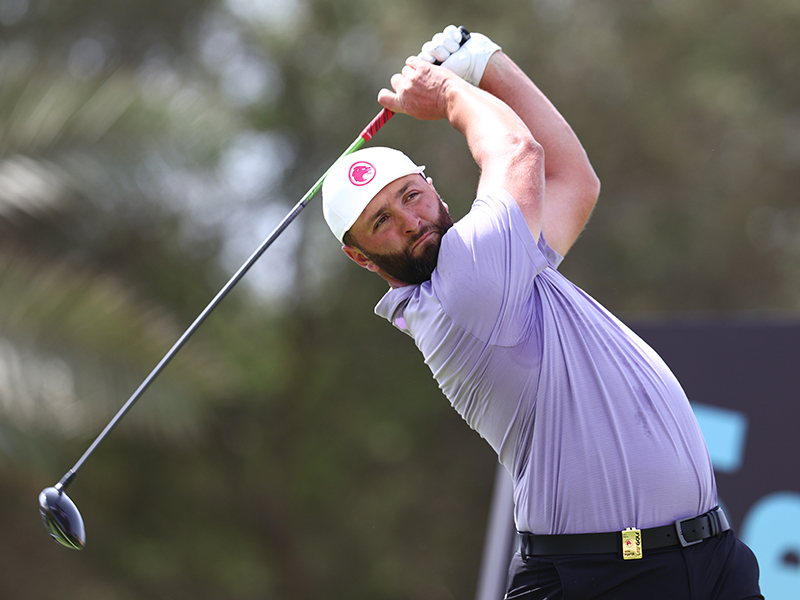
To help hit a fade, the Spaniard likes to pick a spot about six inches in front of the ball where he wants to aim, then takes a little step to the left to open his stance. He’s looking for an out-to-in path – one that travels a little left of target – and a clubface that’s open to the path but not pointing right of target.
“Let your body dictate how you can swing,” Rahm has said. Due to limited right ankle mobility, his swing is shorter than most, but he makes it work by changing direction much earlier, which loads and torques his left wrist into a bowed position. The clubface gets very closed. For amateurs, this often results in a hook, but Rahm clears his hips and rotates with such speed that he can neutralise the strong clubface created by that bowed left wrist and take the left side of the course out of play.
3. Scottie Scheffler's Ball Striking
The Texan’s swing may not be the most conventional, but he strikes his mid- to long-irons beautifully. Rhythm and balance are the key factors; there are no hurried movements or changes of direction, just a smooth building of acceleration coming into and through impact.
Higher handicappers tend to really go after their long irons as they know they’re meant to go a long way. I dare say the World No.1 swings his long irons with the same rhythm as his 8-iron. He takes his arms back only as far as his body can fully turn. If your arms overrun the turn and you start to twist the face open with your hands, you’ll have to reorganise in your downswing and will struggle to strike it purely.
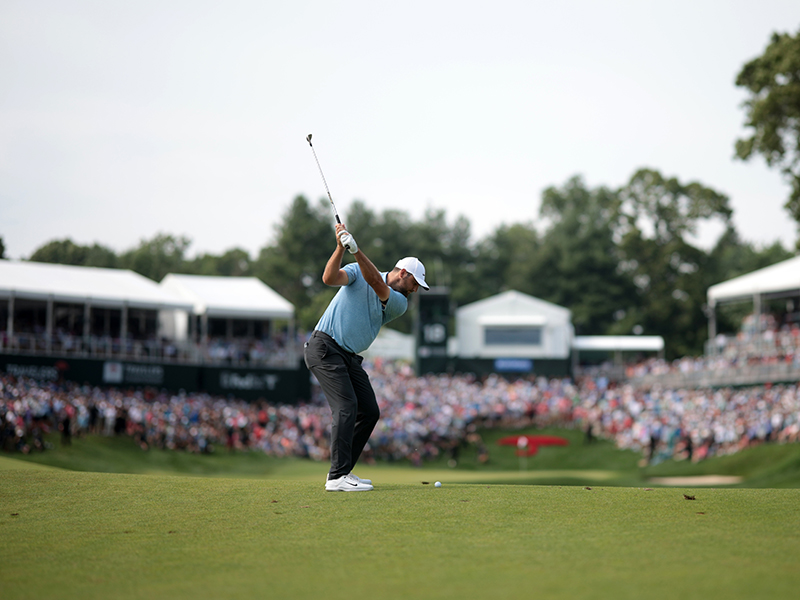
Just after impact, the back of his left hand really drives towards the target and it stays this way for quite some time, which helps with control.
A good tip for anyone struggling with tempo is to say these three words in their head: ‘Back’, ‘And’, ‘Through’. ‘Back’ is the backswing; ‘And’ is the transition; and ‘Through’ is the follow-through. Acceleration comes on the word ‘Through’. Make sure the tone of your voice remains the same throughout.
4. Matt Fitzpatrick's Scrambling
If you didn’t know it before the US Open at Brookline, where he scrambled quite brilliantly, you do now: Fitzpatrick chips cross-handed – so that’s left hand low for a right-handed golfer. This is a technique he generally uses from 30 yards and in, but he does sometimes hit longer shots with it. He says it’s more predictable and gives him far greater consistency. The question is, is it worth trying yourself?
It may feel alien at first, but if you’ve been accused of ‘scooping’ – the tendency to lean back and try to help the ball in the air with your right hand – or if you’re generally struggling with the consistency of your strike, this is a method you may want to practise.
Chipping cross-handed will give you plenty of width in your backswing, which will help you to rotate nice and fast on the way through. It will encourage you to engage your upper body. If you watch Fitzpatrick chip, it’s noticeable how fast and how aggressively he rotates through the ball. The cross-handed technique also helps to keep the hands quiet through impact, which is crucial on greenside touch shots.
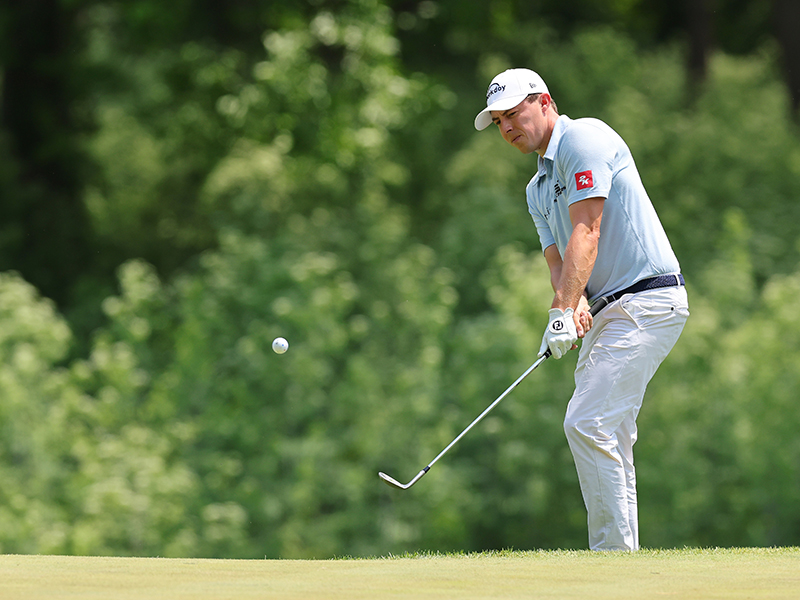
He says that he feels more comfortable with loft in his hands around the green. It’s true to say that a significant majority of tour pros will regularly play shots around the green with the same club. They are then able to produce a variety of trajectories with subtle adjustments to ball position, clubface position at address or by manipulating the loft on the club.
But my advice for club golfers would be to have two options, so two chipping clubs. Maybe an 8-iron for a chip-and-run, and a more lofted club for a higher flight. With too many options it becomes very hard to be consistent.
5. Justin Thomas' Wedge Play
In shorter pitches, the goal is to take all speed and, to a degree, spin out of the equation. Instead of creating leverage and storing up energy to release in the downswing, the backswing merely creates momentum. The downswing starts not at the grip end, but more at the clubhead end where gravity allows the weight of the head to almost feel like it’s falling first.
This is in an effort to reduce the energy transfer between club and ball thus producing a softer-landing shot. The feeling you need on softer-landing pitches is the back of the wedge’s bounce hitting the floor first, with the shaft pretty much returning to the angle at which it was hanging at address.
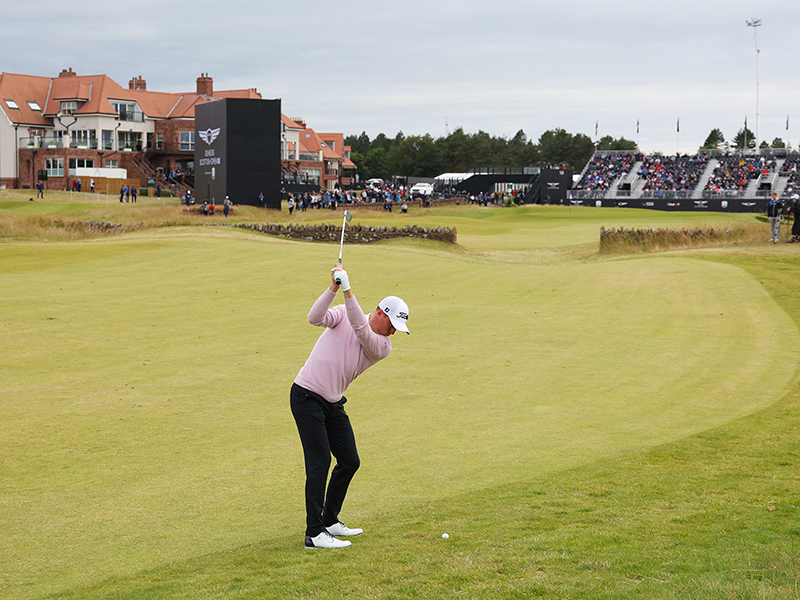
On longer wedge shots, the sequence becomes more like that of a full swing, starting from the ground up with the head of the club lagging significantly behind the legs, hips, torso, arms and wrists to generate the speed and spin.
Soft hands and arms are the keys for Thomas, giving a natural flow to his wrist work; the wrists aren’t powering it, they’re just on the end of the club. Think of an artist holding a brush. They don’t hold it especially tightly as it has to flow.
Club golfers should focus on turning their chest and hips towards the target as this is crucial for good wedge play.
6. Cameron Smith's Putting
What strikes me is just how comfortable Smith looks at set-up. His arms, upper body and neck are all perfectly relaxed. His grip is like a two-thumb grip where the hands are almost on top of each other working as a unit, and his grip pressure is extremely light.
I believe this allows the wrists a little bit of freedom to store up energy in the backswing and release it on the downswing into the back of the ball – so the strike is always so pure. I’d recommend experimenting with just how light you can hold the putter. You’d be amazed at how light you can grip it yet still retain control.
The Australian focuses on delivering a pure strike. The rest takes care of itself. By focusing on the desired elements of the task rather than the consequences of failure, he seems to be able to putt with greater freedom – a lesson for the average club golfer. There’s a real positivity to his stroke.
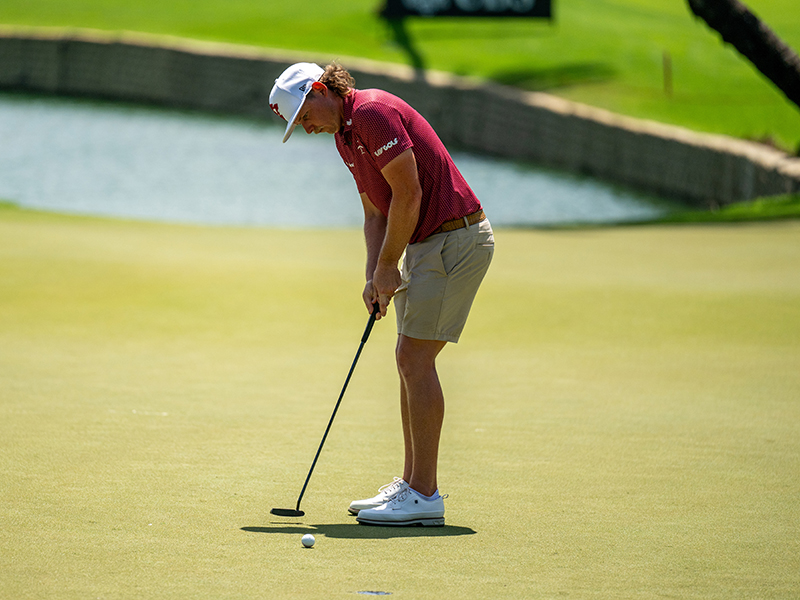
There’s something else you can learn from Smith. Like most great putters, he is constantly working on alignment. He uses a mirror to make sure his perception of what is straight matches up to reality. Before a round, you may want to get into the habit of setting up over a short, straight putt (inside ten feet) with a mirror on the ground and extending a piece of string to the hole. Get your eyes over the ball and set it rolling down the target line.
In round two of The Open in 2022, he holed a staggering 253 feet of putts. Tension kills the flow of a putting stroke, but he has none of that. His arms, upper body and neck are so relaxed. He tends to finish his pre-round putting practice with a few long, lag putts to hone his distance control. Before you tee off, hit a series of putts from fringe to fringe on your putting green and see how close you can group three or four balls together.







